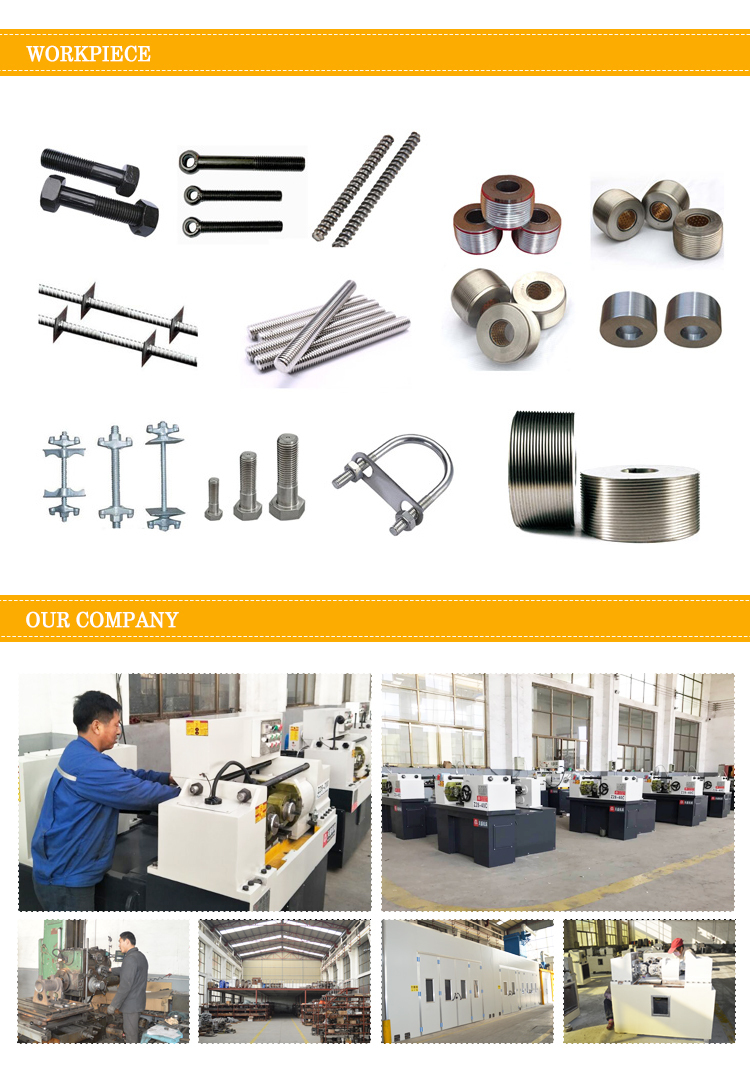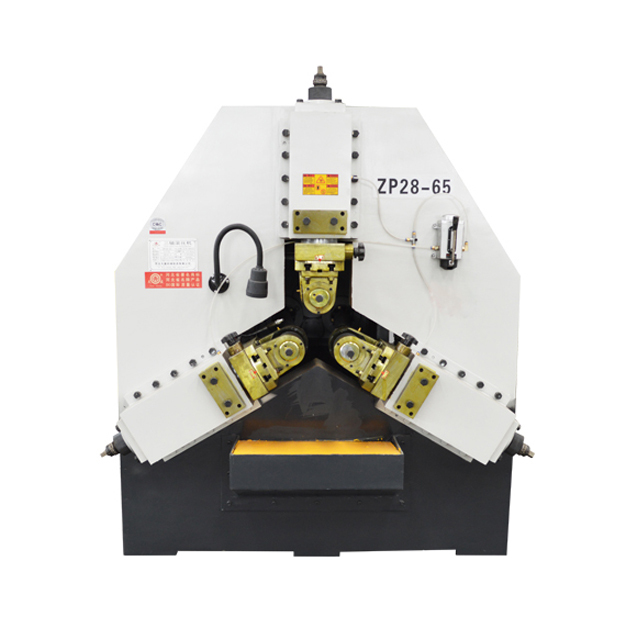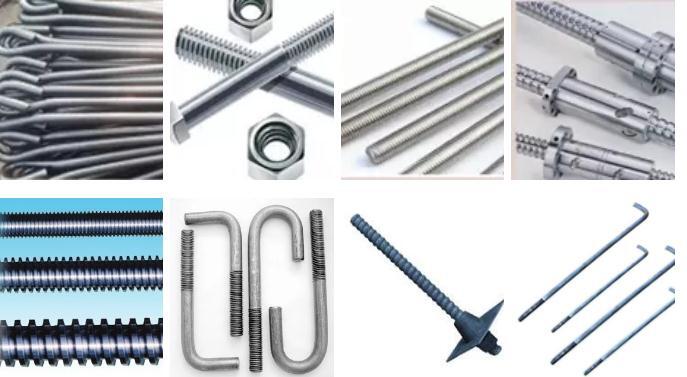huide
thread rolling machine setting
Our leading technology, advanced equipment, scientific management and perfect after-sales service are your confident assurance. In the marketing philosophy of Credit First
| Product name | thread rolling machine setting |
| Keyword | bolt thread rolling machine supplier,thread rolling machine videos,small thread rolling machine supplier,steel bar thread rolling machine,thread rolling and screw machine,china three rollers rolling machine,wholesale three rollers rolling machine,three-axis thread rolling machine |
| Place of Origin | China |
| Production Capacity | 222~400/Per Min |
| Power | 2.2~6kw |
| Thread Dia(mm) | 2.0~4.0 |
| Thread Length(mm) | 4~50 |
| Feature | pipe nipple threading machine in its rolling pressure range of cold, the workpiece for thread, ruled, twill and other treatment; straight, helical and oblique spline gear rolling; straightening, reducing diameter, rolling and various forming rolling. |
| Dimensions | 1642mm*1868mm*1979mm, (Contact us for specific information to confirm) |
| Applicable Industries | Retail, etc. |
| Color | green or customized |
| Weight | 2892kg |
| Product Description | The machine has a safe and reliable electro-hydraulic execution and control system. Each work cycle can be selected in manual, semi-automatic and automatic ways. |
| terms of packing | enerally, we pack our goods in plywood cases. |
| terms of paymen | T/T 30% as deposit, and 70% balance against BL copy |
| Life span | 12 years (Contact us for specific information to confirm) |
| After-sale service | 12 months warrantly, man-made destory will be exception. |
| thread rolling machine setting Advantage | We keep good quality and competitive price to ensure our customers benefit |
| Packing | 2019x2999x1934mm(Contact us for specific information to confirm) |
| OEM/ODM | Customization Service Provided |
| Sales country | All over the world for example:Cape Verde,Guam,Indonesia,Nauru,Juan de Nova Island,Niger |
| MOQ | 2pcs(Contact us for specific information to confirm) |
| Delivery time | 15-20 days for OEM, 5-7days for ready goods. |







thread rolling machine setting
huide-machinery.as one of the most professional thread rolling machine setting manufacturer has the advantages at:
We are the leader thread rolling machine supplier in China, also we have customers worldwide, such as America, Argentina, Brazil, Belarus, Bangladesh, Cape Verde,Guam,Indonesia,Nauru,Juan de Nova Island,Niger, and Italy.We are factory specializing in the manufacture and export of thread rolling machine for more than 20 years, all of the production we sale are at a very best price and high quality.
We take care of our product quality, any defect of the goods, we will take responsibility. You are risk-free.And we believe that the good quality products will can give us survival, so, we always offer the top quality products to our customers, to keep them have the competitiveness in there market.
thread rolling machine setting services FAQs Guide
Are you looking for a quick review guide about thread rolling machine settingservices?
An ultimate FAQ buying guide is available to help you.This guide contains all the information about all the important facts, figures, and various processes regarding thread rolling machine setting services.
Let’s continue!
2.What are the Advantages of Using a thread rolling machine setting in Production?
3. If the machine get damaged, what can I do ?
4.What is the lifespan of a thread rolling machine setting?
5.How Does the Size and Shape of Threads Created by a thread rolling machine setting Affect Their Performance?
6.Are There Different Types of Thread Rolling Dies?
7.How Does the Size of a thread rolling machine setting Affect Production?
8.Can a thread rolling machine setting Create Threads on Hard Materials?
9.What Types of Materials can be Used with a thread rolling machine setting?
10.What are the Main Components of a thread rolling machine setting?
1.Is the thread rolling process more cost-effective than traditional machining methods?
We are a new thread rolling machine setting manufacturer.
Yes, the thread rolling process is generally more cost-effective than traditional machining methods for producing threads. This is because thread rolling is a faster and more efficient process that requires less material and labor compared to traditional machining methods such as cutting or grinding. Additionally, thread rolling produces stronger and more precise threads, reducing the need for additional finishing processes.
2.What are the Advantages of Using a thread rolling machine setting in Production?
We focus on providing high thread rolling machine setting quality products and services.
1. Increased Efficiency: Thread rolling machines are designed to produce threads at a much faster rate compared to traditional methods such as cutting or grinding. This results in increased production efficiency and reduced production time.
2. Cost-effective: Thread rolling machines are cost-effective as they require less maintenance and have a longer lifespan compared to other methods. They also use less energy, resulting in lower operating costs.
3. Consistency and Accuracy: Thread rolling machines produce threads with high precision and consistency, ensuring that each thread is of the same quality. This reduces the chances of errors and rejections, resulting in cost savings for the company.
4. Versatility: Thread rolling machines can produce a wide range of threads, including straight, tapered, and parallel threads. They can also be used to produce threads on a variety of materials, including steel, aluminum, and plastic.
5. Improved Strength: Threads produced by thread rolling machines have a higher tensile strength compared to threads produced by cutting or grinding. This makes them more durable and suitable for use in high-stress applications.
6. Reduced Material Waste: Thread rolling machines produce threads by displacing the material rather than removing it. This results in less material waste, making it a more environmentally friendly option.
7. Easy to Operate: Thread rolling machines are easy to operate and require minimal training. This makes it easier for companies to train their employees and ensure consistent production quality.
3. If the machine get damaged, what can I do ?
In the guarantee time (15 months) , we will send the spare parts to you for free and provide the technical consultant for anytime. If more terrible, we can send our engineers to your factory. We will provide same good after-sale service as the pre-sale service. For any of your questions, we will reply within 12 hours.
4.What is the lifespan of a thread rolling machine setting?
We should perform well in market competition, and the prices of thread rolling machine setting products have a great competitive advantage.
The lifespan of a thread rolling machine can vary depending on factors such as usage, maintenance, and quality of the machine. On average, a well-maintained thread rolling machine can last for 10-15 years. However, with proper care and regular maintenance, some machines can last for 20 years or more.
5.How Does the Size and Shape of Threads Created by a thread rolling machine setting Affect Their Performance?
The size and shape of threads created by a thread rolling machine can greatly affect their performance in various ways. Some of the key factors that are influenced by the size and shape of threads include strength, durability, and compatibility with other components.
1. Strength: The size and shape of threads play a crucial role in determining their strength. Threads with larger diameters and deeper crests tend to be stronger and more resistant to shear forces. This is because they have a larger cross-sectional area, which allows them to distribute the load more evenly and withstand higher levels of stress.
2. Durability: The size and shape of threads also affect their durability. Threads with larger diameters and deeper crests are less prone to wear and tear, as they have a larger surface area in contact with the mating component. This reduces the pressure on individual threads and helps to distribute the load more evenly, thereby increasing their lifespan.
3. Compatibility: The size and shape of threads also determine their compatibility with other components. Threads that are too large or too small may not fit properly with the mating component, leading to issues such as thread stripping or loosening. Additionally, threads with irregular shapes or poor surface finish may not provide a tight and secure fit, which can affect the overall performance of the assembly.
4. Thread engagement: The size and shape of threads also affect the amount of thread engagement, which is the length of the thread that is in contact with the mating component. Threads with larger diameters and deeper crests have a longer thread engagement, which provides a stronger and more secure connection between the components.
In conclusion, the size and shape of threads created by a thread rolling machine can have a significant impact on their performance. It is important to carefully consider these factors when designing and manufacturing threaded components to ensure optimal strength, durability, and compatibility.

6.Are There Different Types of Thread Rolling Dies?
We pay attention to the transformation of intellectual property protection and innovation achievements. Your OEM or ODM order design we have a complete confidentiality system.
Yes, there are different types of thread rolling dies, including:
1. Flat dies: These are the most common type of thread rolling dies and are used for producing external threads on cylindrical parts.
2. Circular dies: These dies have a curved profile and are used for producing threads on conical or tapered parts.
3. Planetary dies: These dies have multiple thread profiles on a single die and are used for producing threads on complex or non-cylindrical parts.
4. Rack dies: These dies have a straight, toothed profile and are used for producing threads on long, thin parts such as screws or bolts.
5. Knurling dies: These dies have a serrated profile and are used for producing knurled patterns on cylindrical parts.
6. Thread forming dies: These dies do not cut material but instead deform it to create threads. They are used for producing threads on soft or brittle materials.
7. Combination dies: These dies have multiple thread profiles on a single die and can be used for both rolling and cutting threads.
8. Adjustable dies: These dies have adjustable thread profiles and are used for producing threads of different sizes on the same die.
9. Tapered dies: These dies have a tapered profile and are used for producing tapered threads on parts such as pipes or fittings.
10. Thread chasers: These dies are used for repairing damaged threads on existing parts. They have a cutting profile that matches the damaged thread and can be used to restore it to its original size and shape.
7.How Does the Size of a thread rolling machine setting Affect Production?
We actively participate in the thread rolling machine setting industry associations and organization activities. The corporate social responsibility performed well, and the focus of brand building and promotion
The size of a thread rolling machine can have a significant impact on production in several ways:
1. Capacity: The size of a thread rolling machine determines its capacity, i.e. the maximum size and length of the threads it can produce. A larger machine will have a higher capacity, allowing for the production of larger and longer threads. This can increase production by reducing the need for multiple setups or machine changes.
2. Speed: Generally, larger thread rolling machines have higher production speeds compared to smaller ones. This is because they have more powerful motors and can handle larger workpieces, resulting in faster thread rolling cycles. This can significantly increase production output.
3. Versatility: Smaller thread rolling machines are typically designed for specific thread sizes and types, while larger machines can handle a wider range of thread sizes and types. This versatility allows for the production of a variety of threads without the need for multiple machines, saving time and increasing production efficiency.
4. Setup and changeover time: Larger thread rolling machines often have more advanced features and automation, making setup and changeover between different thread sizes and types faster and more efficient. This reduces downtime and increases production output.
5. Maintenance and downtime: Larger thread rolling machines are generally more robust and have a longer lifespan compared to smaller machines. This means less frequent maintenance and downtime, resulting in increased production.
In summary, the size of a thread rolling machine can affect production by increasing capacity, speed, versatility, and efficiency, while also reducing downtime and maintenance. Choosing the right size machine for your production needs is crucial for maximizing productivity and profitability.
8.Can a thread rolling machine setting Create Threads on Hard Materials?
Yes, a thread rolling machine can create threads on hard materials. Thread rolling is a cold forming process that uses pressure to deform the material and create threads. This process is suitable for both soft and hard materials, including steel, stainless steel, titanium, and other alloys. The pressure applied by the thread rolling machine can be adjusted to accommodate the hardness of the material, ensuring that the threads are formed without damaging the material. Additionally, thread rolling can produce stronger and more precise threads compared to other methods such as cutting or tapping, making it a preferred method for creating threads on hard materials.
9.What Types of Materials can be Used with a thread rolling machine setting?
We continue to invest in research and development and continue to launch innovative products.
1. Metal: Thread rolling machines are primarily used for rolling threads on metal materials such as steel, aluminum, brass, and copper. These materials are commonly used in industries such as automotive, aerospace, and construction.
2. Plastic: Some thread rolling machines are also capable of rolling threads on plastic materials such as nylon, PVC, and acrylic. These materials are commonly used in industries such as electronics, medical, and consumer goods.
3. Wood: Thread rolling machines can also be used to create threads on wooden materials such as hardwood and softwood. These threads are commonly used in furniture making and woodworking industries.
4. Composite materials: Thread rolling machines can also be used to roll threads on composite materials such as carbon fiber, fiberglass, and Kevlar. These materials are commonly used in industries such as aerospace, marine, and sports equipment.
5. Rubber: Some thread rolling machines are also capable of rolling threads on rubber materials such as silicone, neoprene, and EPDM. These materials are commonly used in industries such as automotive, construction, and medical.
6. Ceramic: Thread rolling machines can also be used to create threads on ceramic materials such as porcelain, clay, and glass. These materials are commonly used in industries such as pottery, construction, and electronics.
7. Other materials: Depending on the type and capabilities of the thread rolling machine, it may also be able to roll threads on other materials such as leather, paper, and fabric. These materials are commonly used in industries such as fashion, packaging, and upholstery.
10.What are the Main Components of a thread rolling machine setting?
I have a comprehensive after -sales service system, which can pay attention to market trends in time and adjust our strategy in a timely manner.
1. Bed: The bed is the main structural component of a thread rolling machine. It provides a stable base for all other components and supports the weight of the machine.
2. Headstock: The headstock is the part of the machine that holds the workpiece and rotates it during the thread rolling process. It also houses the drive mechanism for the workpiece rotation.
3. Tailstock: The tailstock is the part of the machine that supports the other end of the workpiece and provides stability during the thread rolling process.
4. Spindle: The spindle is the rotating shaft that holds the thread rolling dies. It is driven by the headstock and rotates the workpiece during the thread rolling process.
5. Thread Rolling Dies: These are the tools that actually form the threads on the workpiece. They are made of hardened steel and come in various sizes and shapes depending on the type of thread to be rolled.
6. Feed Mechanism: The feed mechanism is responsible for moving the thread rolling dies towards and away from the workpiece. It is usually controlled by a hydraulic or mechanical system.
7. Control Panel: The control panel is where the operator can set and adjust the parameters of the thread rolling process, such as the speed, feed rate, and depth of the thread.
8. Lubrication System: Thread rolling machines require a constant supply of lubricant to reduce friction and heat during the rolling process. The lubrication system ensures that the dies and workpiece are properly lubricated.

- Place of Origin:
- Video outgoing-inspection:
- Machinery Test Report:
- Marketing Type:
- Warranty of core components:
- Core Components:
- Key Selling Points:
- Applicable Industries:
- Application:
- Condition:
- Production Capacity:
- Voltage:





















